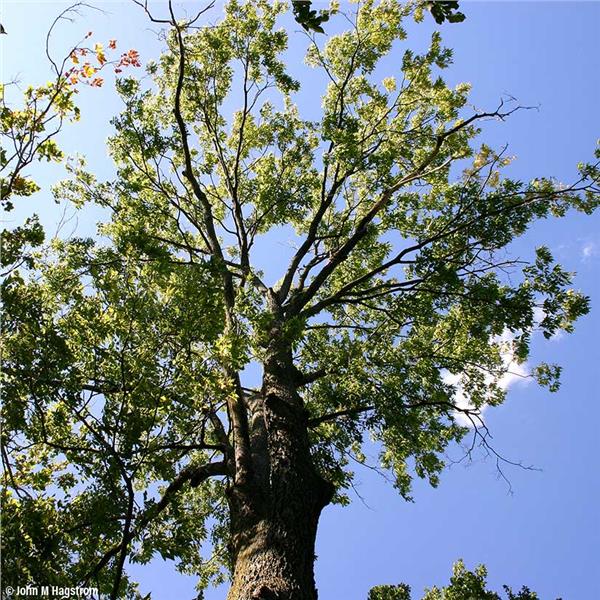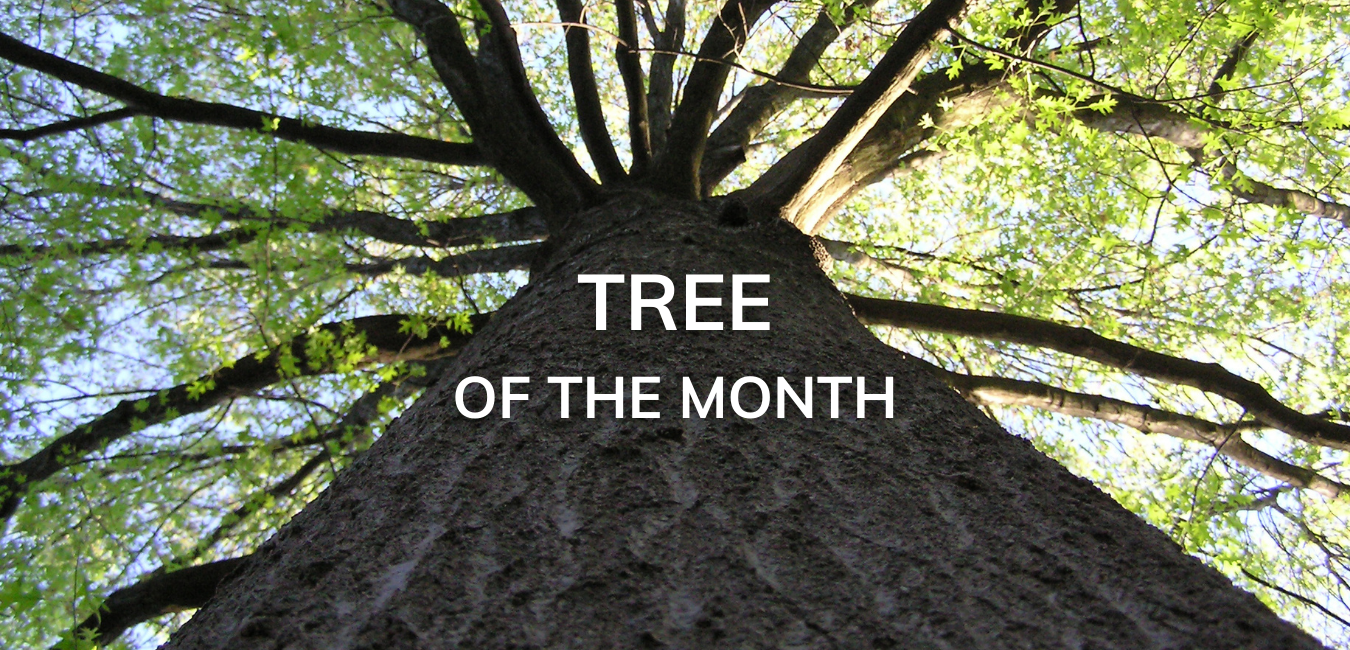
The Northern Hackberry tree is a member of the elm tree family. It has many common names, such as the American Hackberry, Beaverwood, Common Hackberry, False Elm, Nettletree, and Sugarberry. In Canada, it is found across southern Ontario and southwestern Quebec, growing commonly in moist areas near rivers and lakes. It is also widely distributed throughout most of eastern and central U.S.
With its ability to withstand harsh conditions such as strong winds, pollution, heat, salt, and poor soil, hackberry trees can live to be 200 years old. Reaching a height of about 15 m (50′), which is smaller than many other trees, it has a broad, rounded crown, and dense, upward-reaching branches, especially if given the space to spread; it can grow quickly. Its leaves are 6 to 9 cm (2¼” – 3½”) long with a tapering tip and toothed edges. They turn an attractive yellow-green to yellow in the fall. The small male and female flowers grow separately on the same tree. The ripe fruit of the hackberry are small, round and reddish purple, about 6 – 8 mm (¼”) across, with each fruit hanging below the leaves on a slender stalk. The bark is grayish-brown with distinctive ridges that become more pronounced as the tree gets older.
Given that it’s adaptable to all soil types and wide-ranging pH levels of soil, can live in dry and moist conditions, and has the ability to grown in full sun and partial shade, the hackberry makes an ideal tree for urban streets and gardens. It also can be easily transplanted. Whether in the city or the forest, its sweet, calcium-rich fruit attracts many species of birds, insects and small mammals. Traditionally, the bark of the hackberry was used to regulate menstrual cycles, and to combat colds and sore throats. The fruit was mixed with fat and corn to create porridge and it was also pounded into a paste and baked in an oven.
Resources
https://www.ontario.ca/page/northern-hackberry
https://treecanada.ca/resources/trees-of-canada/northern-hackberry-celtis-occidentalis/
http://www.treesofnorthamerica.net/show/tree/Northern-Hackberry/44
https://canadiantreetours.org/species-pages/Common_hackberry.html
https://landscapeontario.com/celtis-occidentalis-hackberry
Image Source: https://www.arborday.org/trees/treeguide/TreeDetail.cfm?ItemID=845


